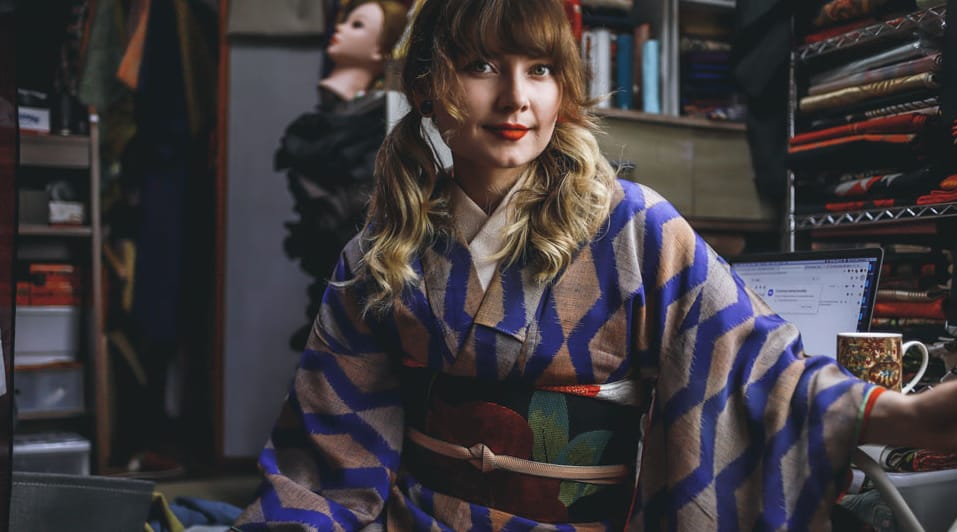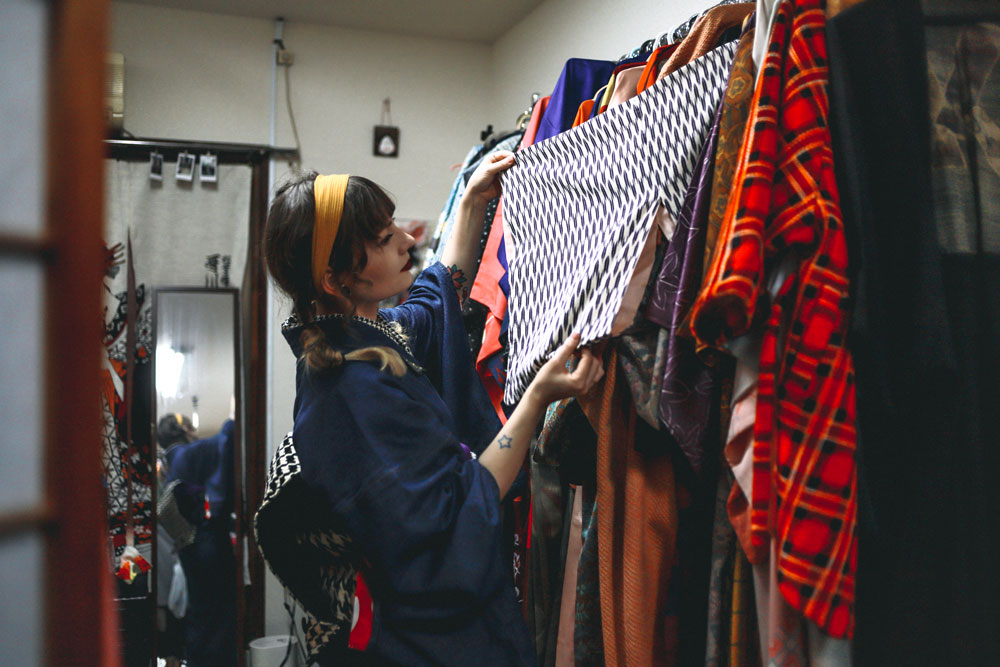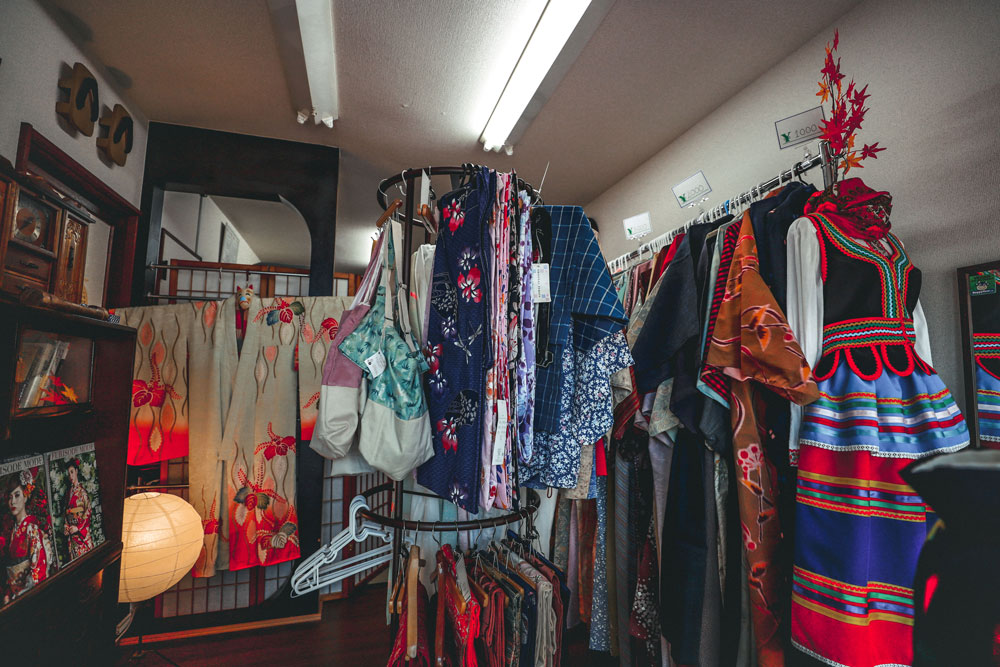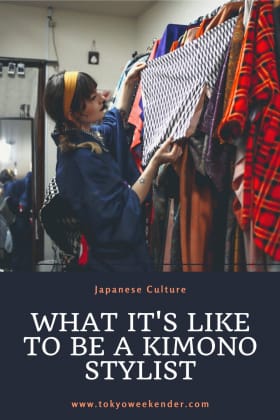Four years ago, photographer Stasia Matsumoto was invited by a Japanese friend to try on the furisode she had worn for her Coming of Age day 40 years previously. “Of course, I wanted to try it, knowing that furisode is the most formal and festive type of kimono,” recalls Matsumoto. “I had a full makeover that day. I was dressed by a professional, got my hair done and a friend took photos of me. I was wearing something rather vintage, but even after 40 years it looked impeccable – vivid colors, beautiful embroidery.” She so enjoyed the experience that Matsumoto soon signed up for kimono-dressing classes.
Today, she employs what she learned to offer others the same experience, sharing photographs of kimono-wearing customers through her photography project Inkimono. In spring 2019, she opened her own studio in Asakusa where she offers personalized kimono styling, fittings, photography and lectures. We spoke to Matsumoto to learn more about her journey to becoming a certified kimono consultant, teacher and stylist.
What is a typical day or week like for you?
I run my business myself, so it wouldn’t be an exaggeration to say that I work 24/7. Preparations for kimono experiences usually start the night before, when I put together outfits for the next day’s photoshoots. Creating an outfit is a process, and usually takes about two hours. The experience itself starts at 10:30am. First, I check with my clients if the outfit is good as is or if it needs modification. Next up is a lecture where I explain what kimono is – its types, history, cultural significance, sometimes fabrics and patterns. This can take up to 90 minutes. I want my clients to know what they’re wearing and to see kimono as something more than a dress that will look nice in photos. If requested, I will do their hair before starting the dressing process.
“I want my clients to see kimono as something more than a dress that will look nice in photos.”
Every step of the way, I explain what I do, the function and meaning of each item that makes a kimono outfit – and there are many! The photoshoot is last, but certainly not the least. I choose locations according to the client’s request, but also their kimono style. The whole experience can take as long as five hours but after wrapping everything up, my working day isn’t over. All under layers used for styling have to be washed; outer layers like kimono, obi and haori need to be aired then folded. I will also spend a few hours editing the photos. Later in the evening, I start the preparations for the next shoot.
How did you become a kimono stylist?
After a six-month kimono course, I had to decide if I wanted to continue and study to become a certified kimono consultant, teacher and stylist. The world of kimono is very rich and I found myself wanting to know more. I wanted to share my knowledge with others, too, and help them understand kimono better. I decided to continue my education, which later led me to focus fully on kimono styling and photography.
What is the most important aspect of the job?
Many things need to be taken into consideration when putting together an outfit. First and foremost, you need to think about the client. Their style, preferences, things they like and dislike, body type, even hair and eye color. The goal is to create something that they would choose themselves if they were kimono wearers; something well-balanced, something they will feel good wearing without making them feel like they’re cosplaying.
Why did you open your own shop?
My shop, or studio, rather, is a combination of everything I’m passionate about and wanted to focus on professionally. For a long time, kimono and photography were not compatible for me. As I learned more about kimono, I thought I could educate others on its history and cultural significance while also providing a portrait photography service. I took a risk and left my previous job to offer kimono experiences full-time. I needed a studio where I could store my kimono collection and organize workshops and lessons. For those interested in wearing kimono, I thought of having a few items for sale at affordable prices.
“Showing younger generations that kimono can be fashionable could be the way to save it.”
What would you say is the future of kimono?
Unfortunately, it isn’t looking great. Traditional kimono sellers struggle with lack of clientele and many second-hand shops are closing. Not many people know much about kimono, so there’s no demand. It isn’t present in a Japanese person’s life anymore. Showing younger generations that it can be fashionable and worn as casual clothing too could be the way to save it.
Any advice for those wanting to get into this line of work?
I always advise that the best way is to learn from the very basics, all the rules and proper, traditional way of wearing kimono – then you can get creative with it, find your own style and enjoy it your own way.
Find out more about Stasia Matsumoto’s kimono styling on Instagram: @inkimono
Photographs by Stasia Matsumoto.











